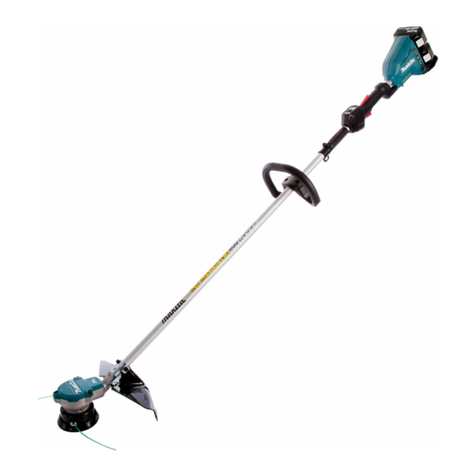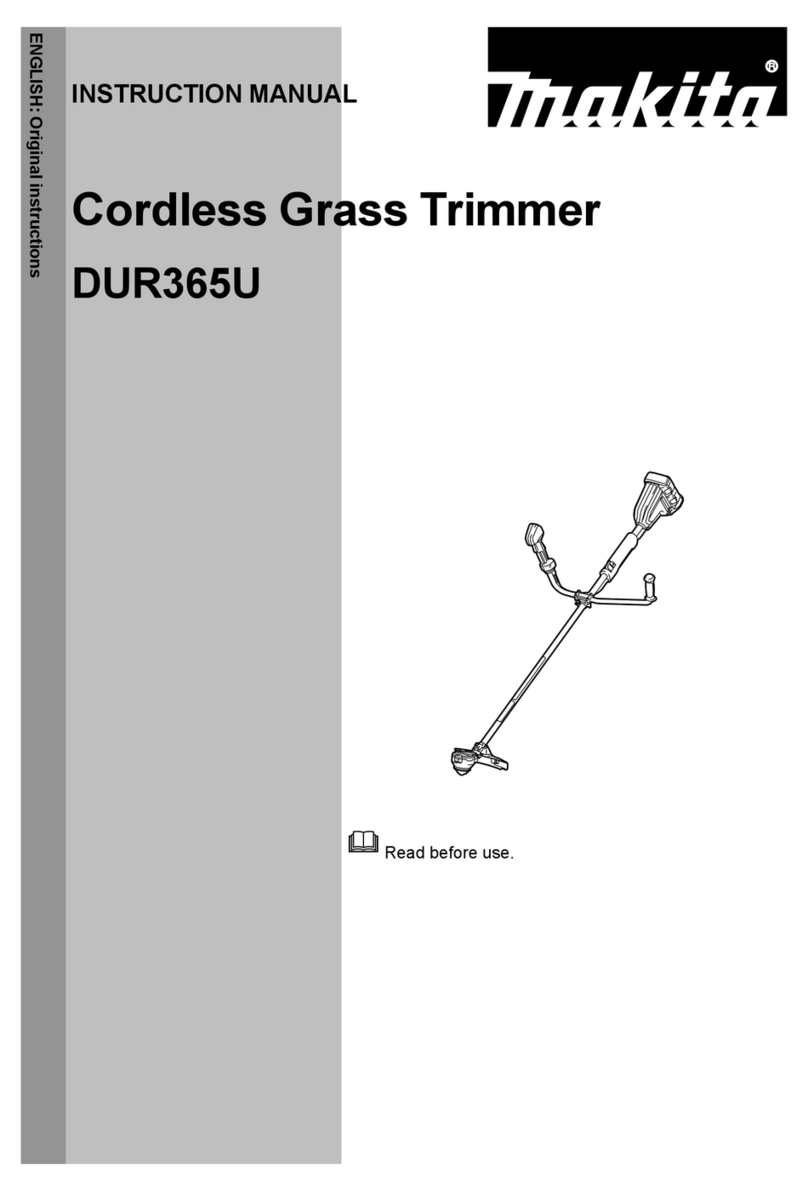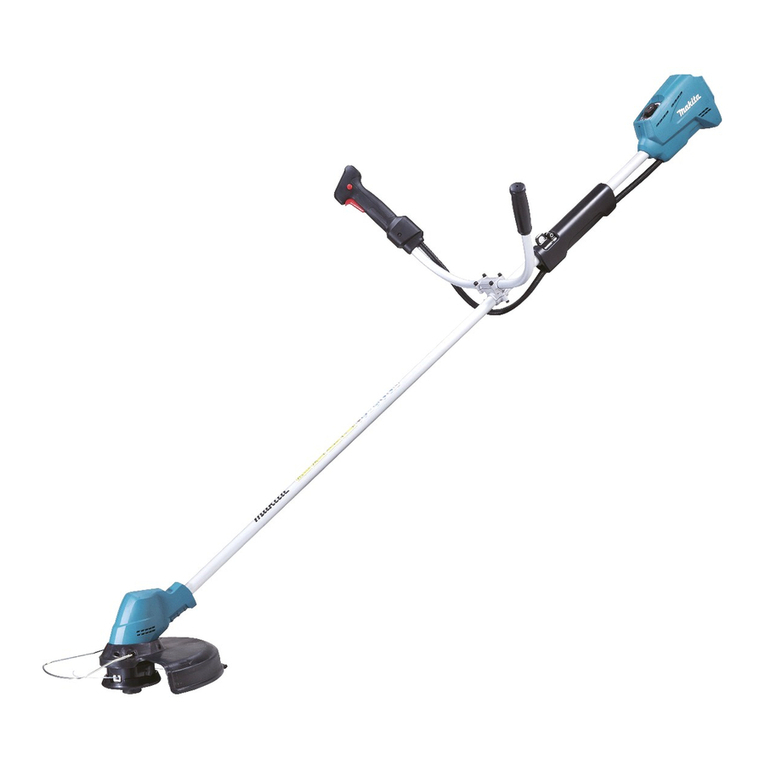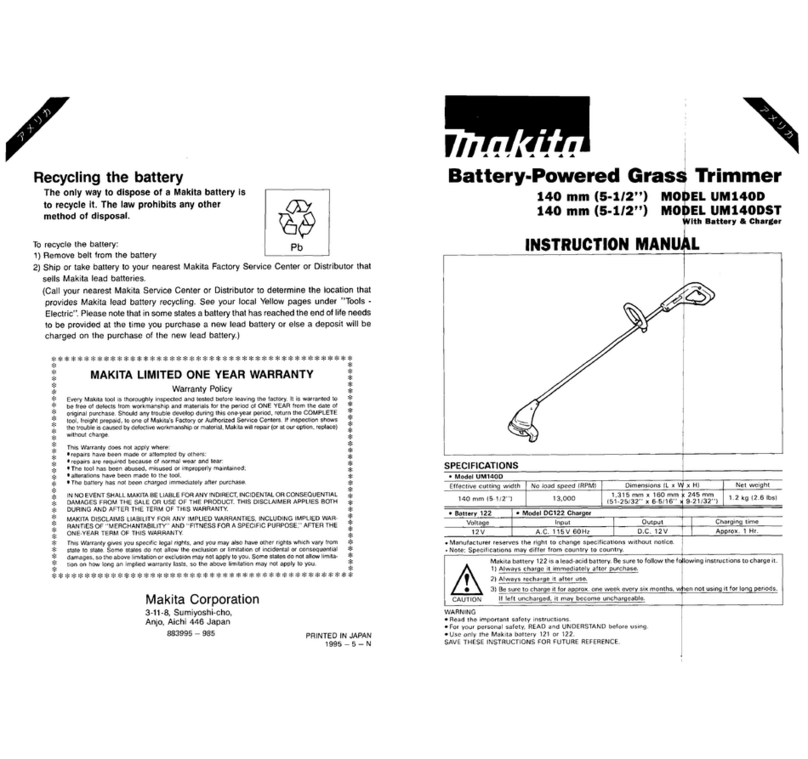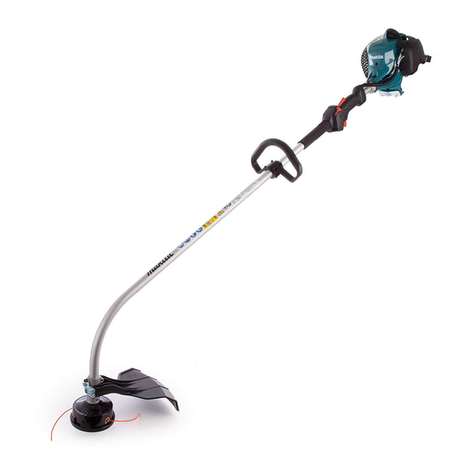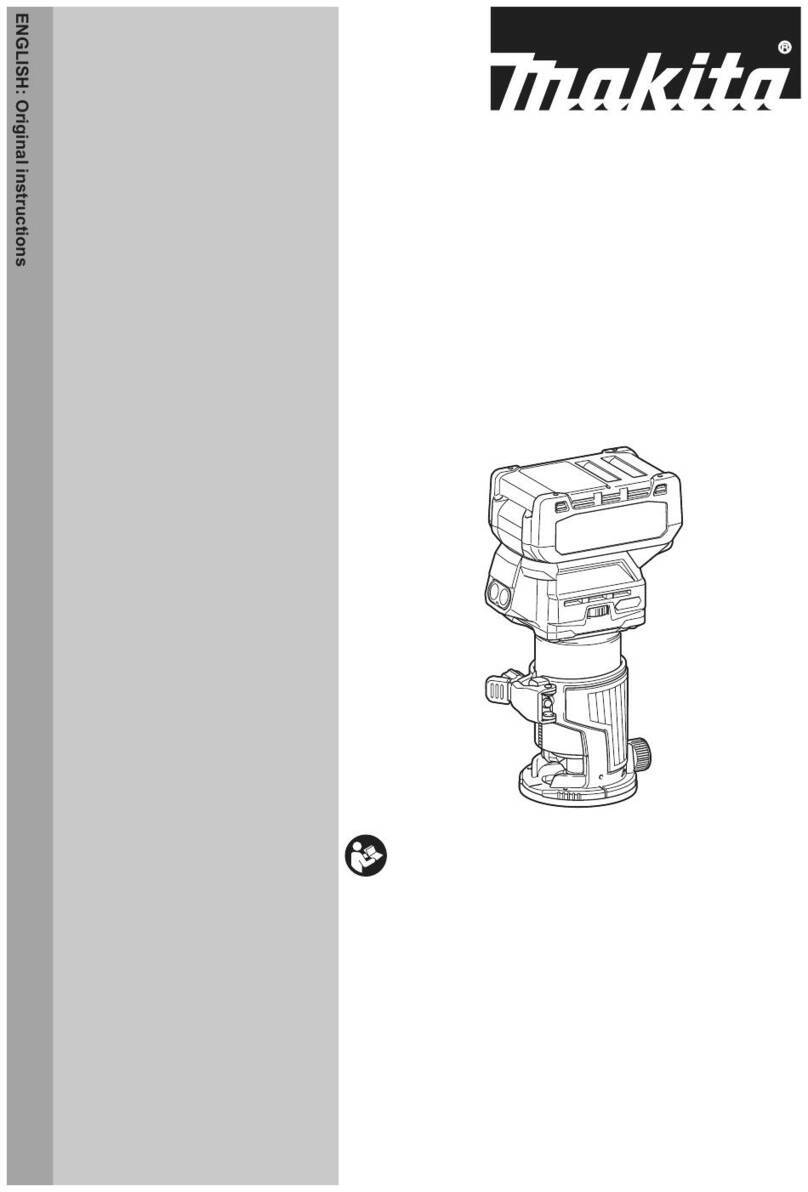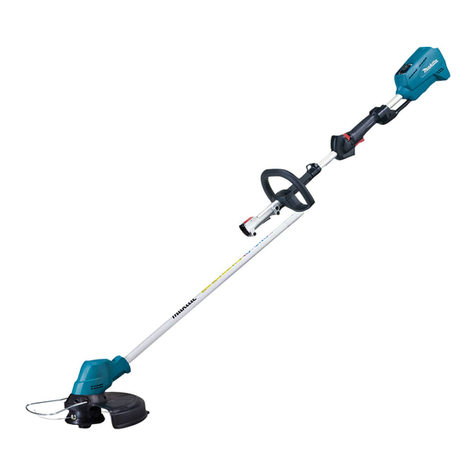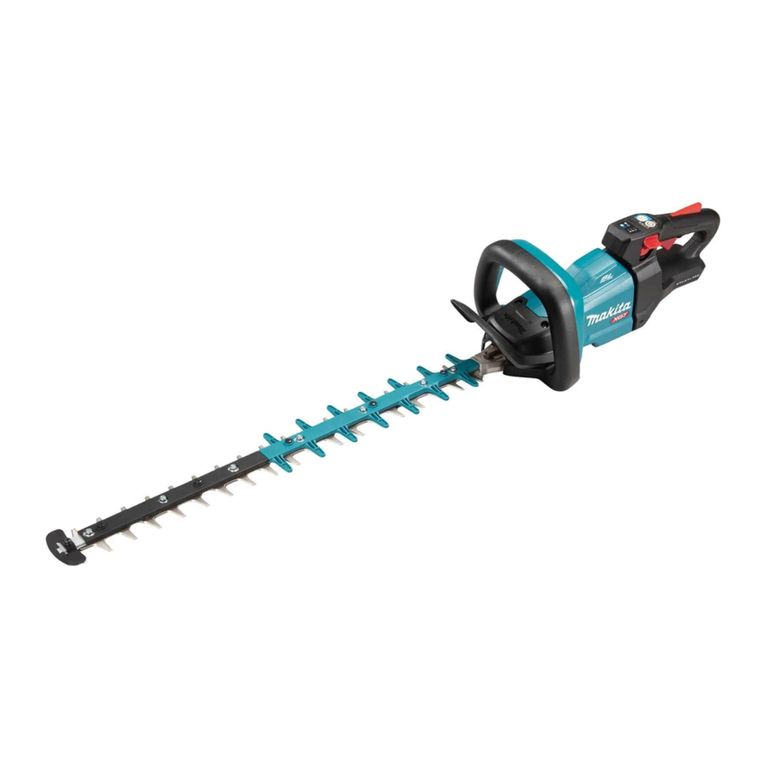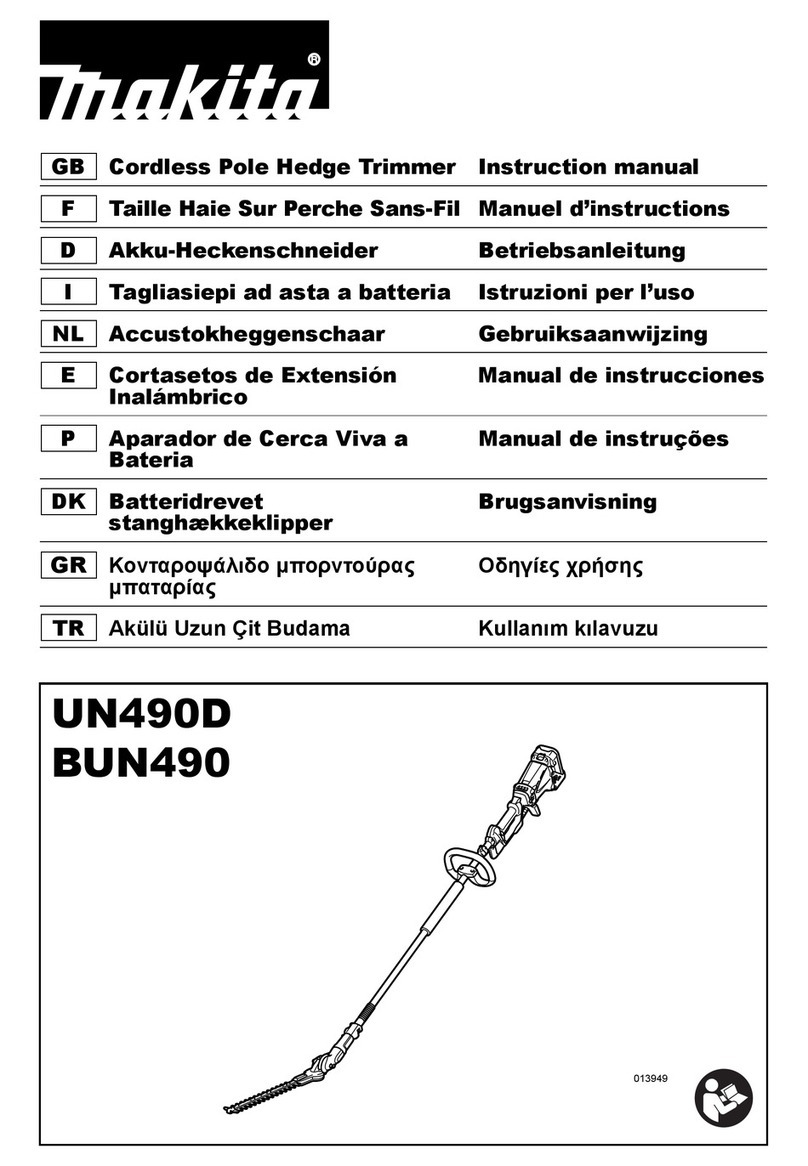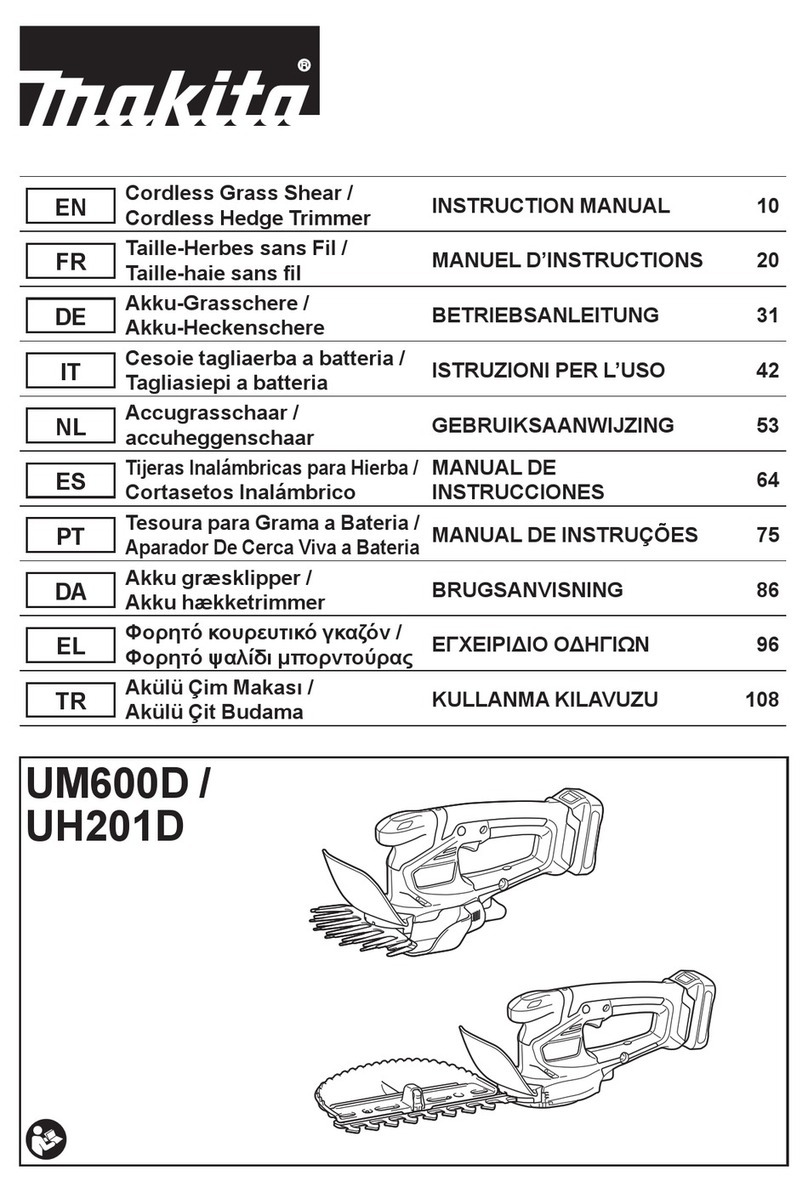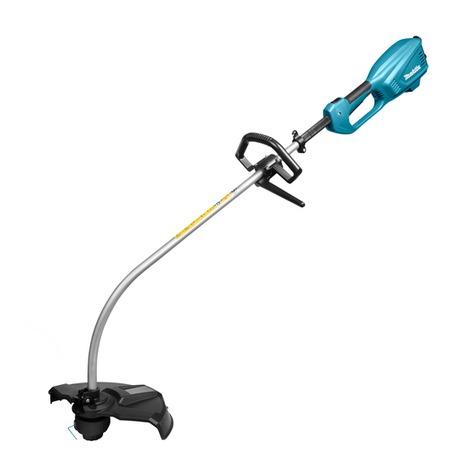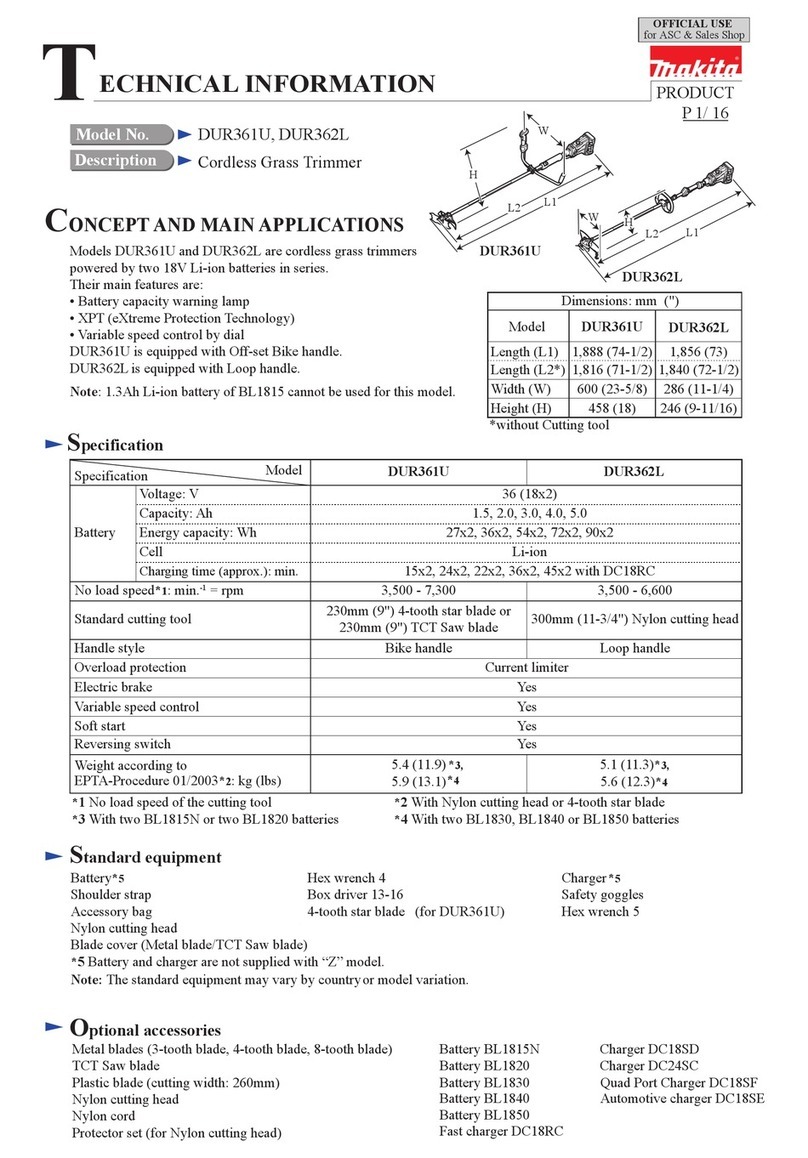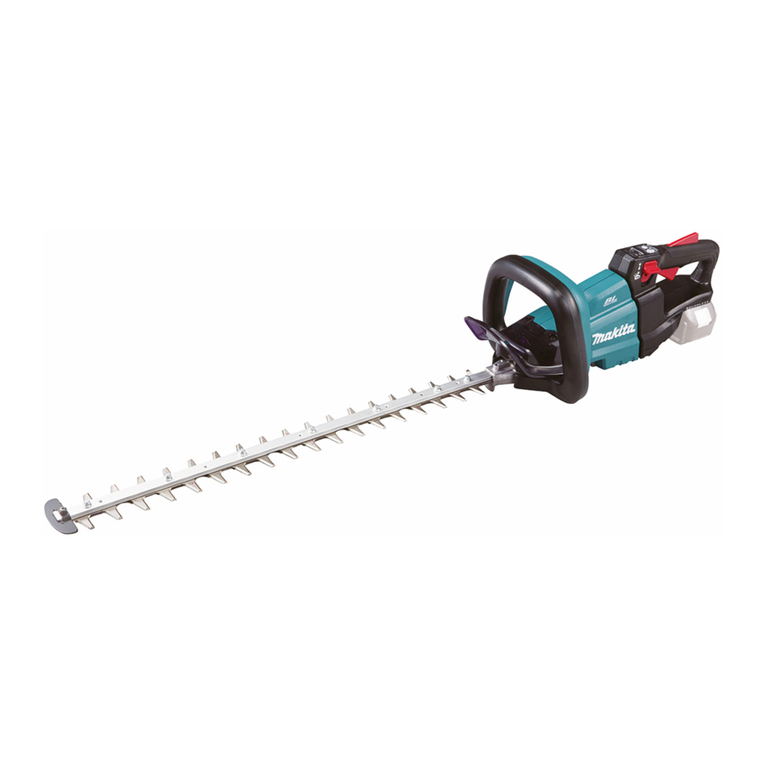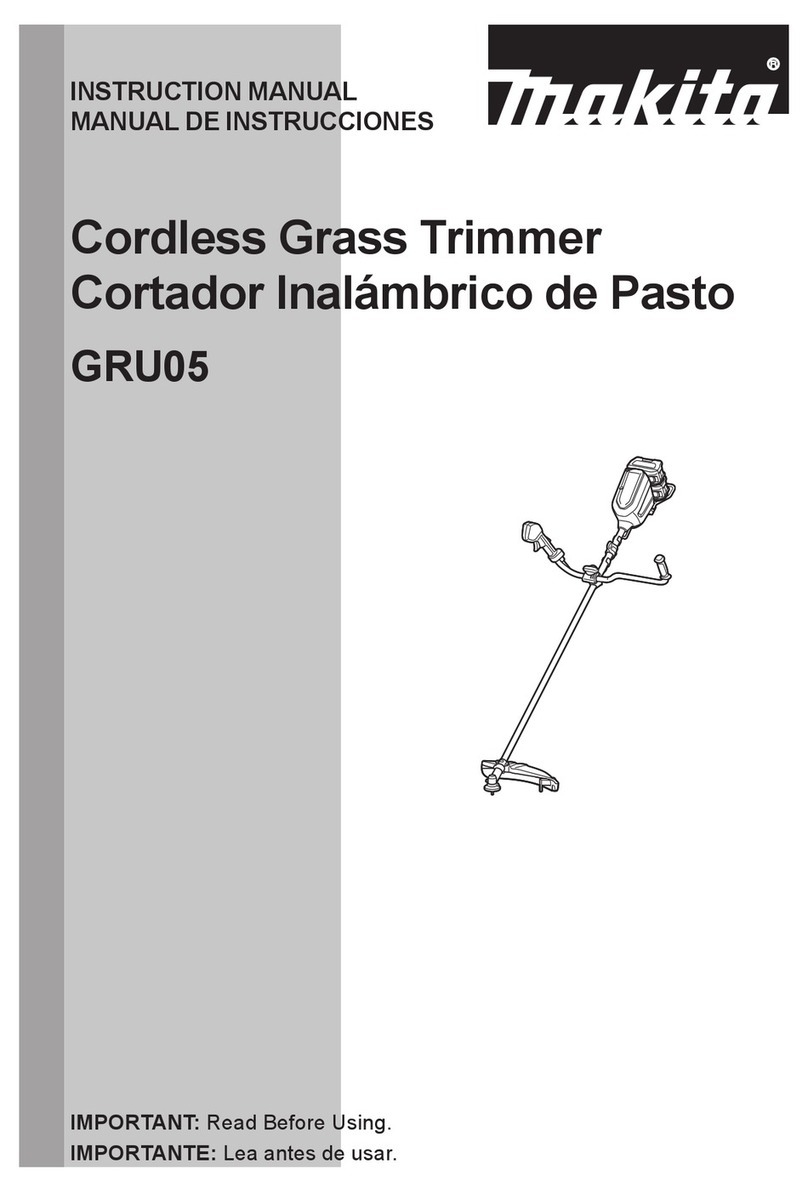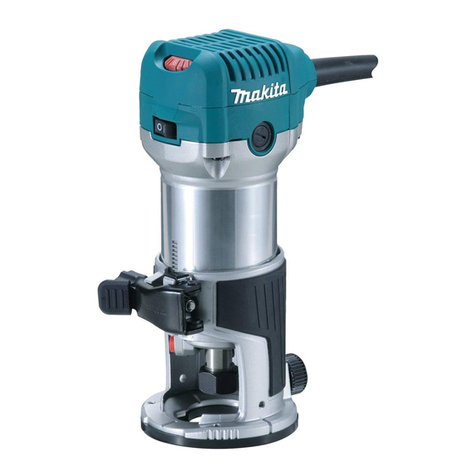
4ENGLISH
13. Do not dispose of the battery(ies) in a re.
The cell may explode. Check with local codes for
possible special disposal instructions.
14.
Do not open or mutilate the battery(ies). Released
electrolyte is corrosive and may cause damage to the
eyes or skin. It may be toxic if swallowed.
15. Do not charge battery in rain, or in wet
locations.
16. Do not replace the battery with wet hands.
17. Do not replace the battery in the rain.
18. Do not wet the terminal of battery with liquid
such as water, or submerge the battery. Do not
leave the battery in the rain, nor charge, use,
or store the battery in a damp or wet place. If
the terminal gets wet or liquid enters inside of bat-
tery, the battery may be short circuited and there is
a risk of overheat, re, or explosion.
19. After removing the battery from the tool or
charger, be sure to attach the battery cover to
the battery and store it in a dry place.
20. If the battery cartridge gets wet, drain the
water inside and then wipe it with a dry cloth.
Dry the battery cartridge completely in a dry
place before use.
21. Do not charge the battery outdoors.
22. Do not handle charger, including charger plug,
and charger terminals with wet hands.
Starting up the tool
1. Make sure that there are no children or other
people within a working range of 15 meters
(50 ft), also pay attention to any animals in the
working vicinity. Otherwise stop using the tool.
2. Before use always check that the tool is safe
for operation. Check the security of the nylon
cutting head and the guard and the switch
trigger/lever for easy and proper action. Check
for clean and dry handles and test the on/o
function of the switch.
3. Check damaged parts before further use of
the tool. A guard or other part that is damaged
should be carefully checked to determine
that it will operate properly and perform its
intended function. Check for alignment of
moving parts, binding of moving parts, break-
age of parts, mounting, and any other condi-
tion that may aect its operation. A guard or
other part that is damaged should be properly
repaired or replaced by our authorized ser-
vice center unless indicated elsewhere in this
manual.
4. Switch on the motor only when hands and feet
are away from the nylon cutting head.
5. Before starting make sure that the nylon cut-
ting head has no contact with hard objects
such as branches, stones etc. as the nylon
cutting head will revolve when starting.
6. Remove any adjusting key, wrench or blade
cover before turning the power tool on. An
accessory left attached to a rotating part of the
power tool may result in personal injury.
7. Make sure there are no electrical cables, water
pipes, gas pipes etc. that could cause a hazard
if damaged by use of the tool.
8. Do not use a cutting tool which is not recom-
mended by Makita.
9. Do not operate the tool in bad weather or if
there is a risk of lightning.
Method of operation
1. Only use the tool in good light and visibility.
During the winter season beware of slippery
or wet areas, ice and snow (risk of slipping).
Always ensure a safe footing.
2. Take care against injury to feet and hands from
the nylon cutting head.
3. Never cut above waist height.
4. Never stand on a ladder and run the tool.
5. Never climb up into trees to perform cutting
operation with the tool.
6. Never work on unstable surfaces.
7. Remove sand, stones, nails etc. found within
the working range. Foreign particles may dam-
age the nylon cutting head.
8. Should the nylon cutting head hit stones or
other hard objects, immediately switch o the
motor and inspect the nylon cutting head.
9. Before commencing cutting, the nylon cutting
head must have reached full working speed.
10. During operation always hold the tool with
both hands. Never hold the tool with one hand
during use. Always ensure a safe footing.
11. The nylon cutting head has to be equipped
with the guard. Never run the tool with dam-
aged guards or without guards in place!
12. All protective equipment such as guards sup-
plied with the string trimmer must be used
during operation.
13. Except in case of emergency, never drop
or cast the tool to the ground or this may
severely damage the tool.
14. Never drag the tool on the ground when mov-
ing from place to place, the tool may become
damaged if moved in this manner.
15.
Always remove the battery cartridge from the tool:
— whenever leaving the tool unattended;
— before clearing a blockage;
— before checking, cleaning or working on
the tool;
— whenever the tool starts vibrating
abnormally;
— whenever transporting the tool.
16. Always ensure that the ventilation openings
are kept clear of debris.
